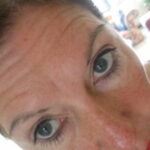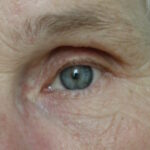As we age, our skin tends to show sun damage that we accrued from a lifetime of sun exposure. Unfortunately, this damage often starts deep in the dermis and surfaces many years later (making it tricky to treat). Women closely associate sun spots with aging…often more so than wrinkles! As a result, countless companies are marketing products and treatments that promise to reverse brown spots. With so many options on the market, what is the best choice for you? Let’s discuss the most popular treatments and how they differ.
Home care products that focus on skin lightening should always be a consideration. Some people choose just home care, while others choose it as a way to maintain results from more expensive options. New technology and ingredient research has helped skin care to come a long way in regards to lightening hyperpigmentation, but you should always be weary of anyone that promises results. Sun damage may reside deep into the layers of the skin, or it may be more topical. Either way, you should always allow at least 8 weeks before seeing any kind of result. Ingredients to look for include: Lactic Acid, Vitamins A and C, Ferula Foetida, White Tea Extract, Phytic Acid, and Licorice Root Extract. Many lines use Hydroquinone, but this is a controversial ingredient and is currently banned in Europe; it is a potential carcinogen and can be quite irritating for many people. Wearing SPF every single day is absolutely critical because the sun can reverse any results you are obtaining. Skin care is an excellent option because it is cheaper than most alternatives, and helps you maintain the health of your skin. Drawbacks include the fact that it typically is not as effective as medical options, it can take longer to see results, and you must fully commit to a regimen (no cheating).
Spa treatments can also help lighten sun spots. Chemical peels and microdermabrasions are popular services that a licensed skin therapist can perform in a spa or medical setting. A chemical peel can range in strength and ingredients, but the purpose is to penetrate deeper into the layers of the skin to treat sun spots from the “inside out”. A microdermabrasion is more superficial…it can help exfoliate topical pigmented skin cells, but you probably won’t notice major results. Both treatments are typically done in a series (just one treatment will not be enough to reverse years of sun damage). You should have a consultation with a skin professional before committing to a treatment plan, and always beware of false promises that sound too good to be true. Spa treatments are beneficial because they are cheaper than lasers, can be quite effective for superficial damage, and are a great supplement to home care. The downsides include the fact that they are not as results-driven as medical options, you must commit to a series, and you will need to find a highly trained therapist to ensure safety and results.
Laser treatments are wildly popular, and currently the most effective option. They are able to go deeper into the layers of the skin and correct problems where they start. Technology has allowed laser treatments to come along way, meaning there are many options on the market. According to the Mayo Clinic, lasers generally work by using an intense light beam to destroy the outer layer of skin. Simultaneously, the dermis is being heated to stimulate fibers like collagen and elastin. The result is new skin that forms through the healing process; this new skin should be firmer and healthier. Fraxel is definitely an option worth looking in to…it is FDA approved for most skin concerns, and utilizes a revolutionary technology that creates a microscopic column that reaches down to the dermis. This stimulates a natural healing process that helps replace damaged tissue with younger, healthier skin! Lasers are beneficial because they can deliver amazing results, typically require little downtime, and often help with other aging concerns. Unfortunately, they can be costly (often up to thousands of dollars), the results are not necessarily permanent, and some people may not be a good candidate due to certain medications, skin tone, etc.
When you need sun spots to be gone now, camouflage makeup can be your best friend! Mineral options tend to provide the best coverage since the particles overlap and form a protective barrier over the skin. You typically don’t need mid-day touch-ups with mineral makeup, and they usually have an SPF to help prevent sun damage from worsening. You can also layer minerals as much as necessary to cover pigmentation problems without looking cakey. Start with a concealer that is close to your skin tone or slightly lighter. Apply it to dark spots and follow with a foundation. For maximum coverage, try a cream foundation followed by a powder. Not all mineral makeup lines are created equal, so choose a reputable brand and have a makeup artist recommend the best colors for you. I am a skin therapist and have seen great results with Jane Iredale makeup on my clients. Camouflage makeup is great because it is inexpensive, and there are many high quality lines available that can deliver instant results. The drawback is that you aren’t really correcting the problem, just masking it.
Aging is a part of life, but sun damage doesn’t have to be. Technology presents us with many opportunities for treating those darned spots, but it is up to you to do the research and not get fooled by gimmicks. Be realistic in your budget when deciding which option is right for you, and speak with a professional for an analysis of your unique skin. No matter which route you take, keep in mind that home care and daily sunscreen are critical to extend the life of any treatments you receive. And always remember…a smiling face is better than a perfect complexion any day.
Sources:
Mayo Clinic – Laser Resurfacing
Fraxel



